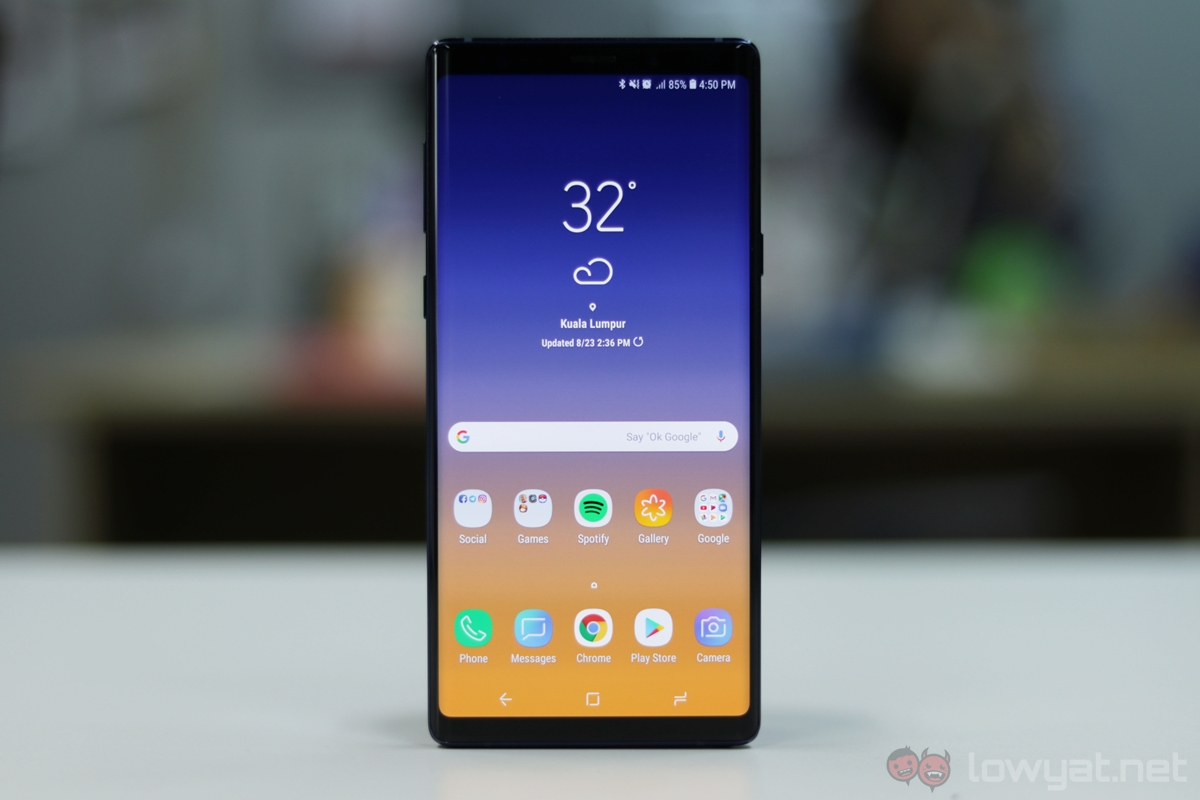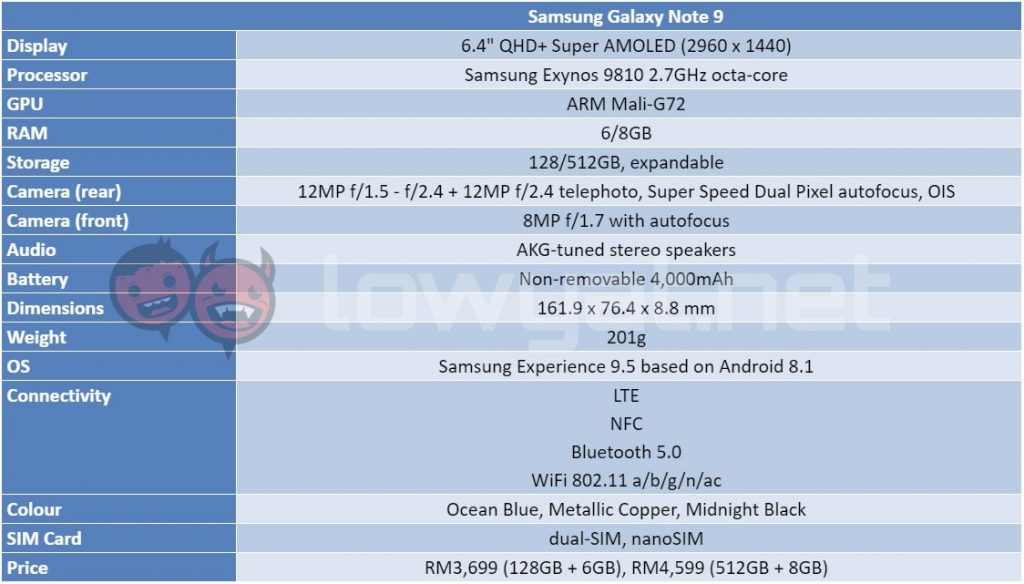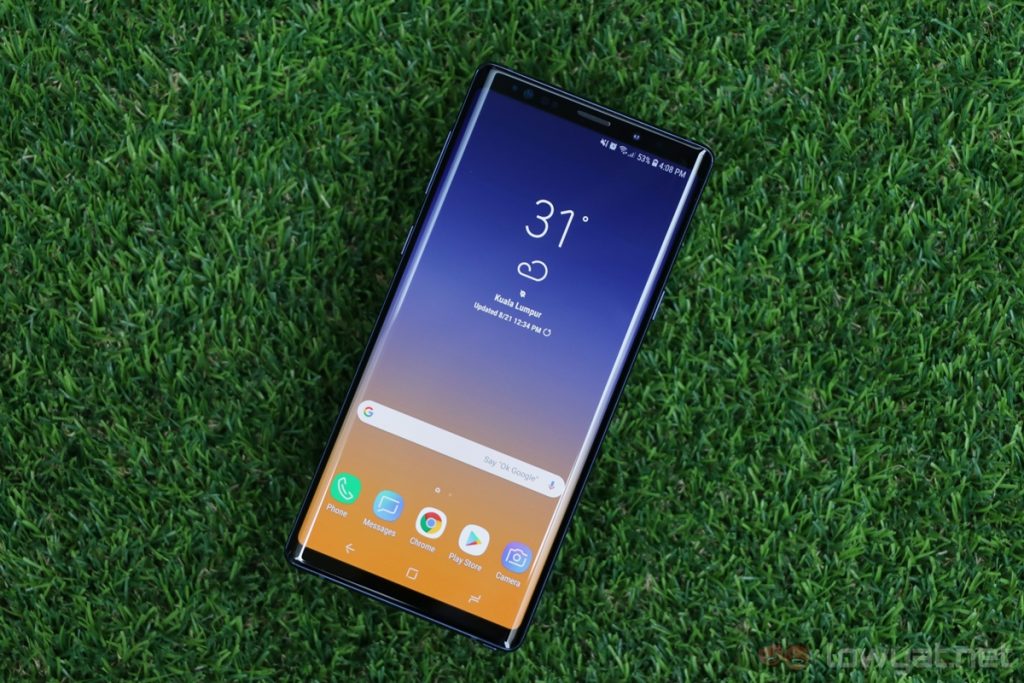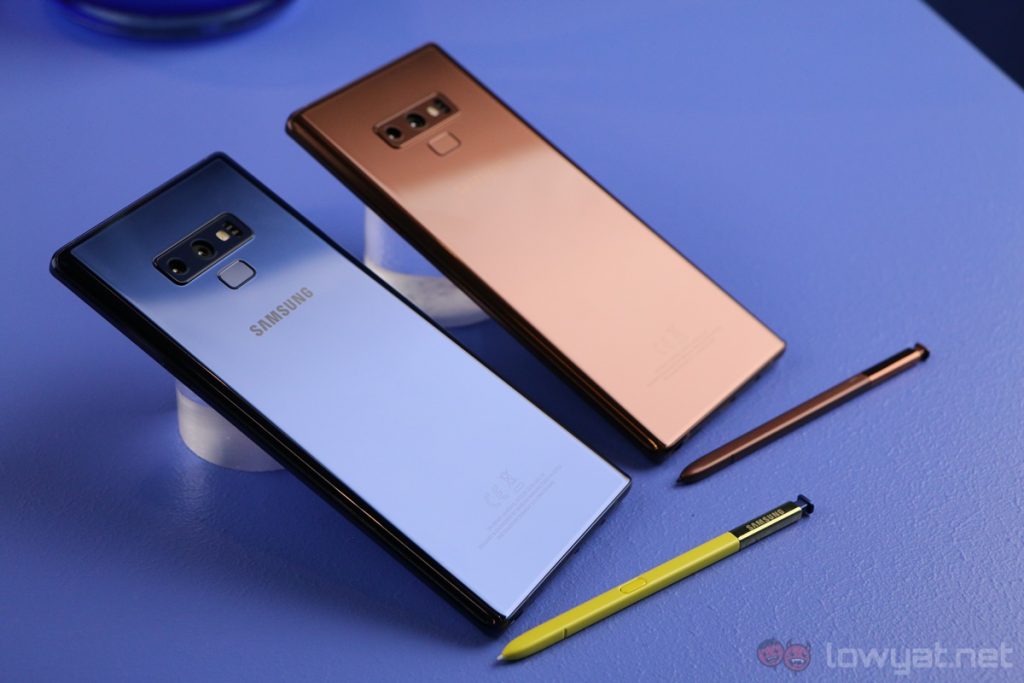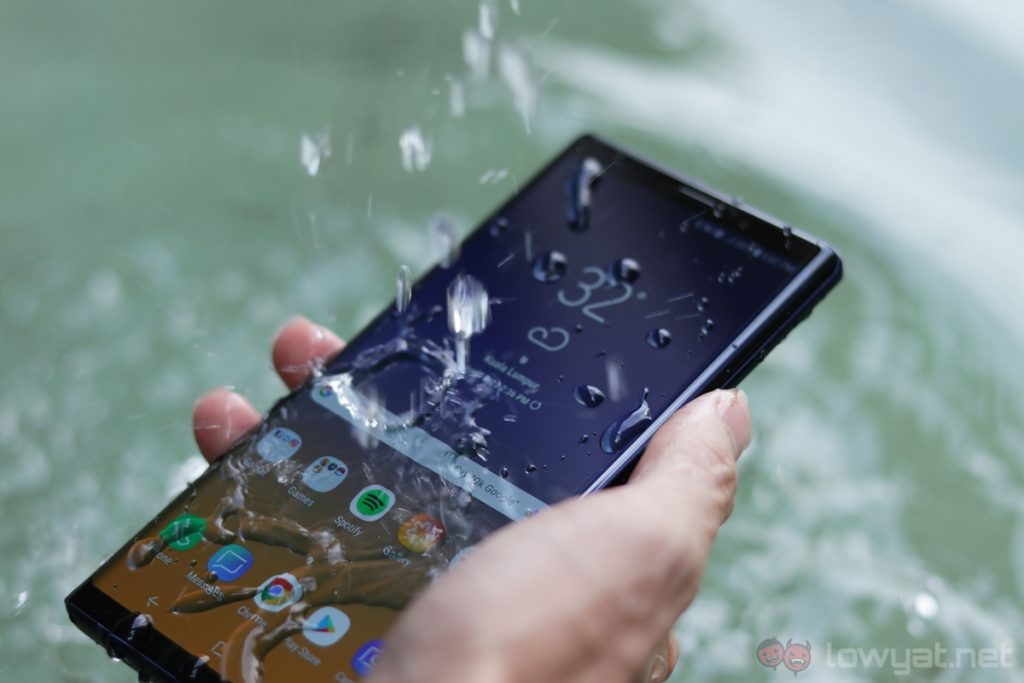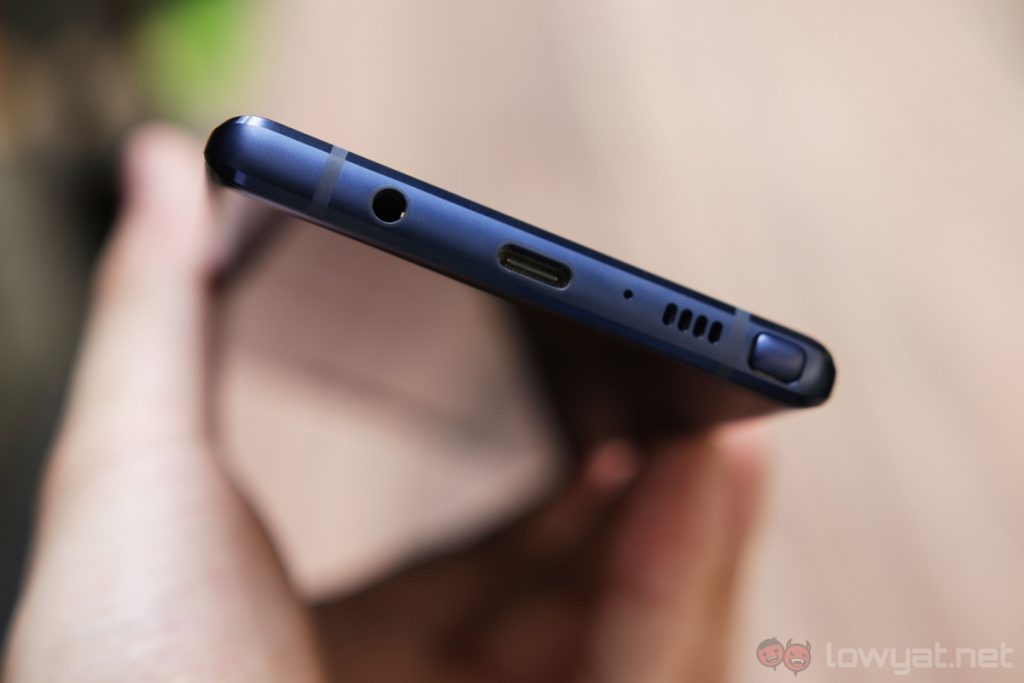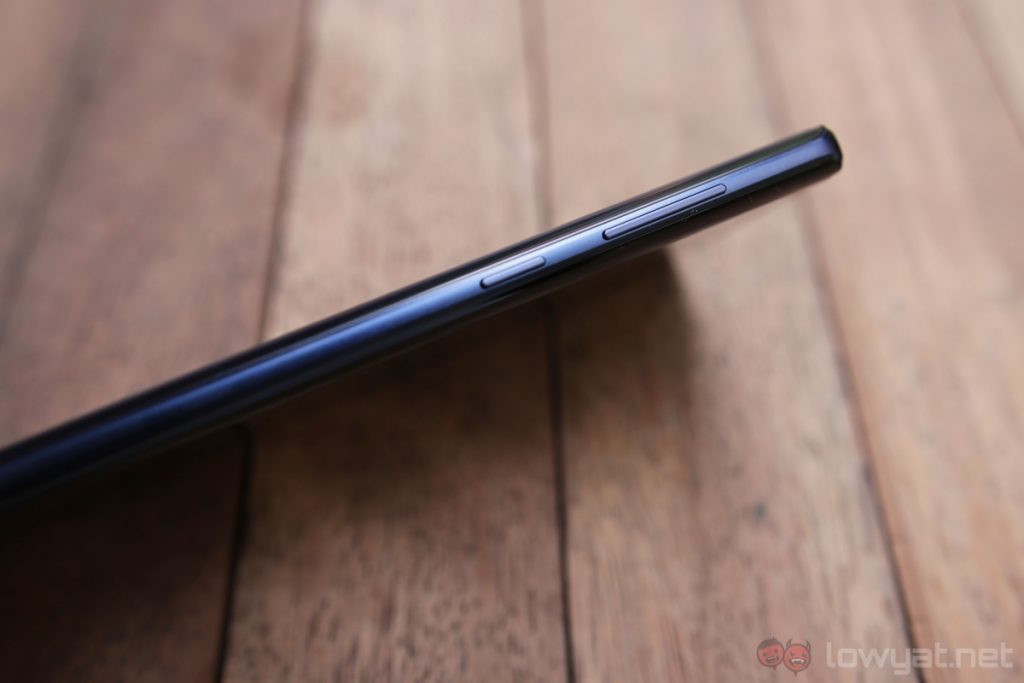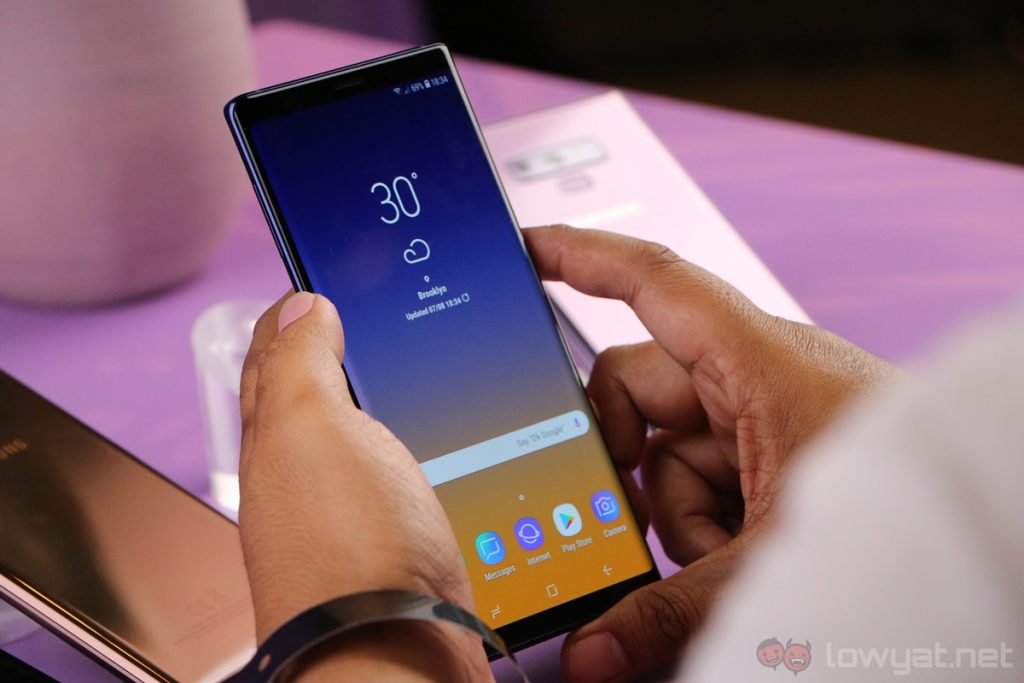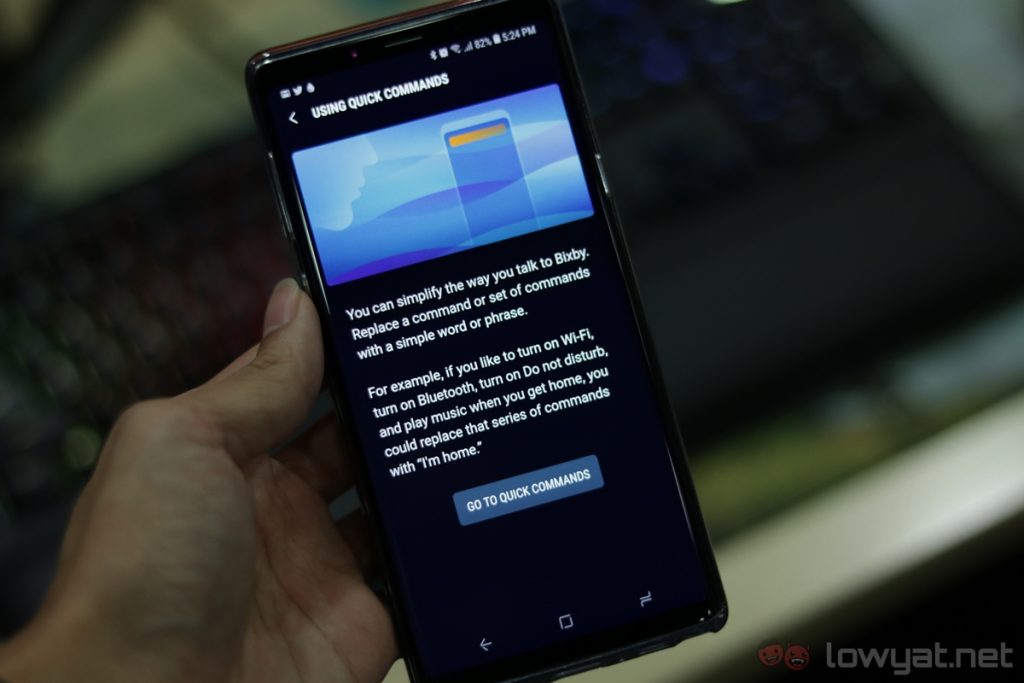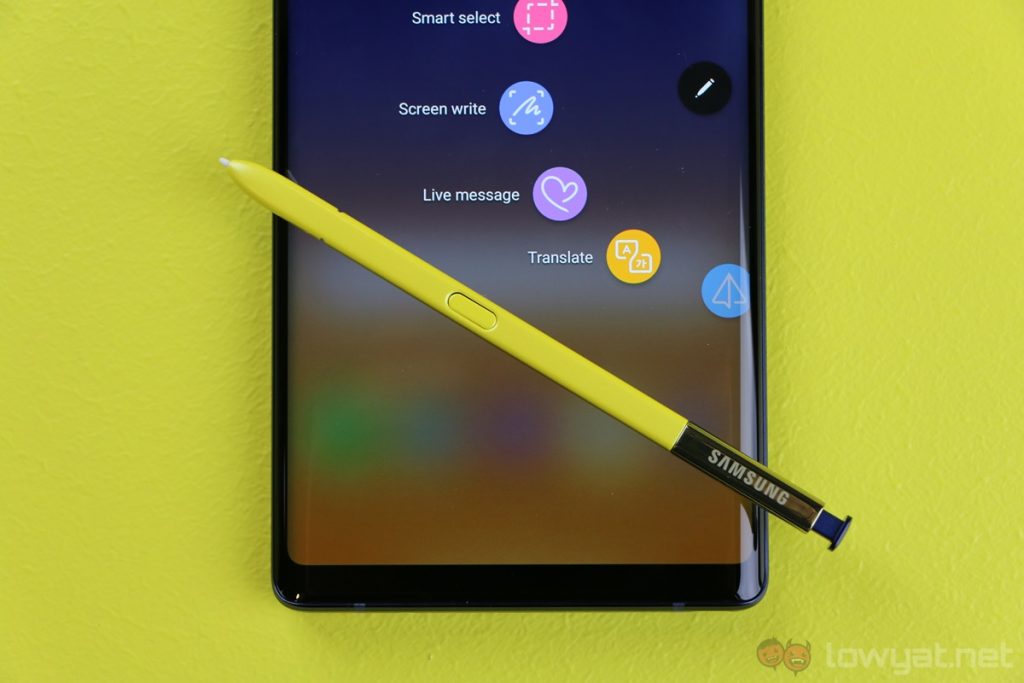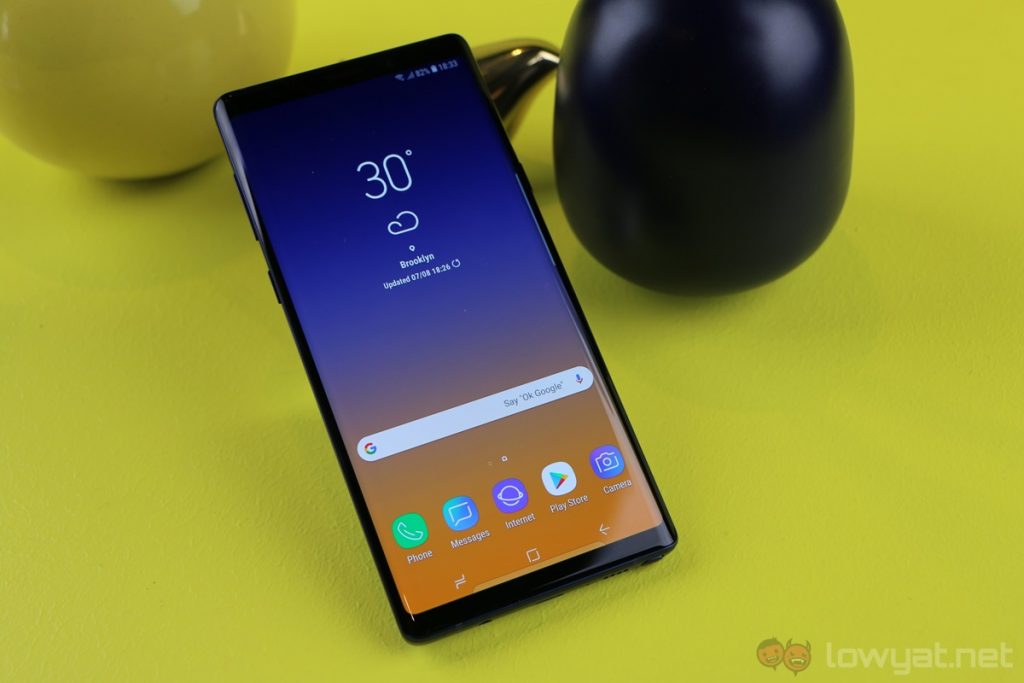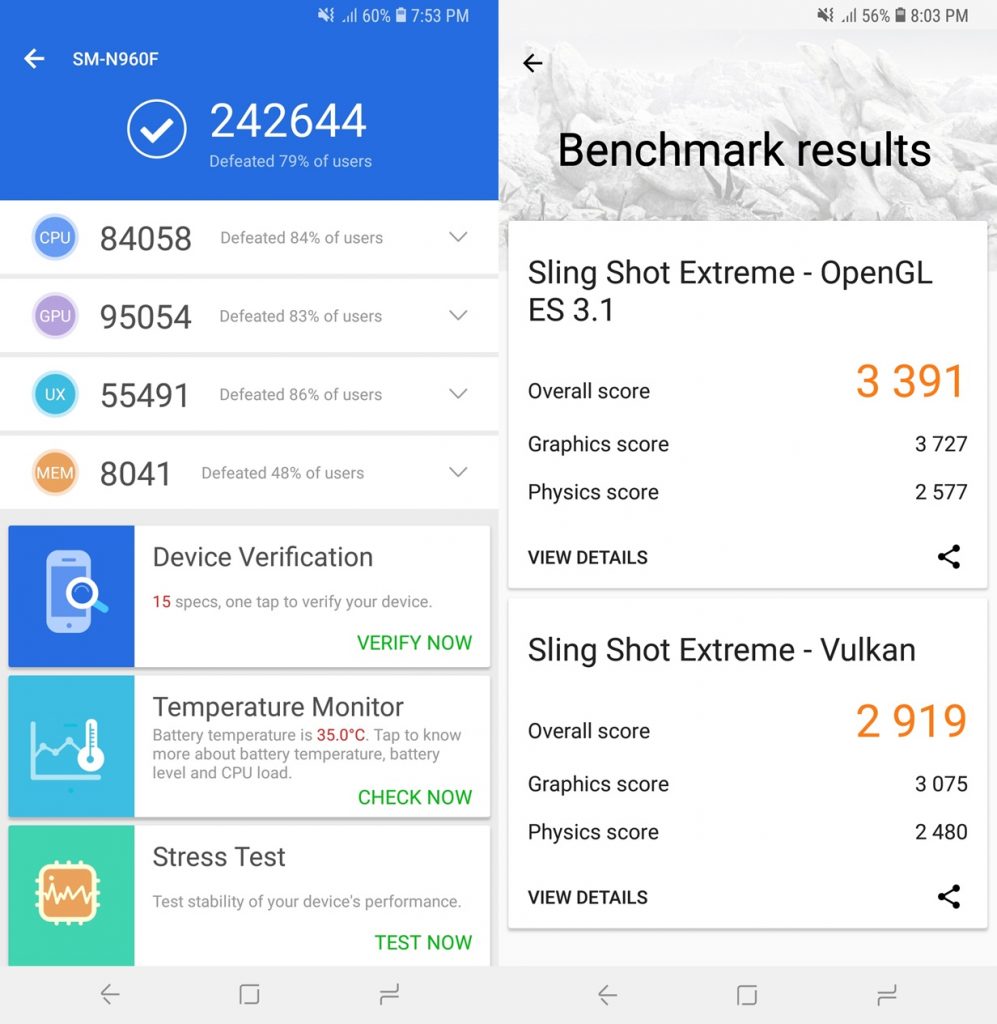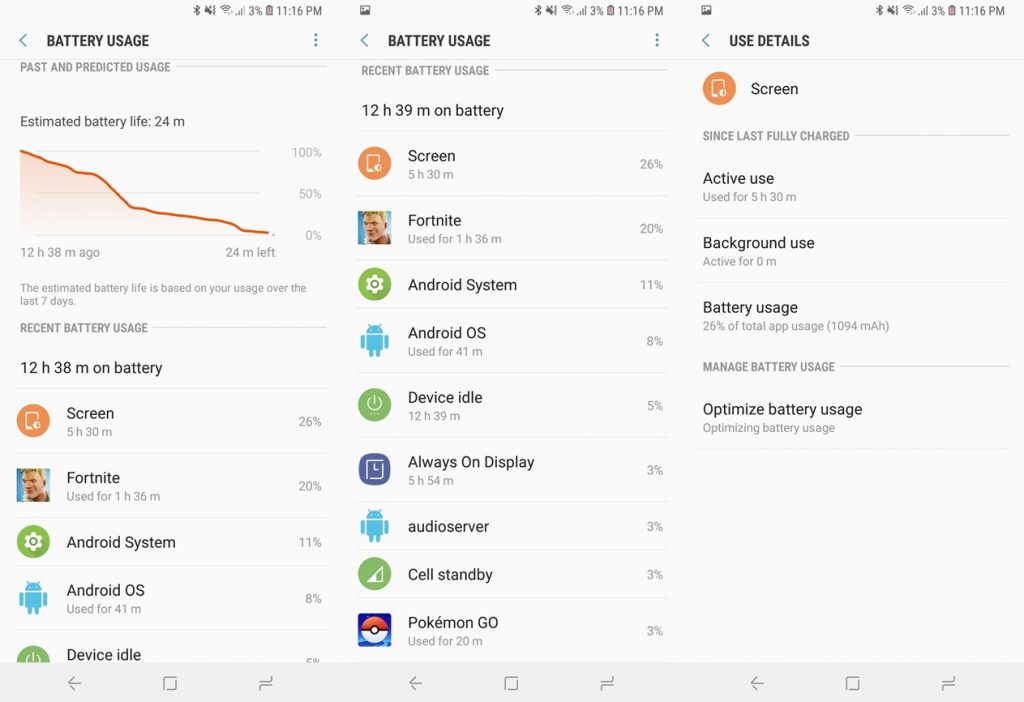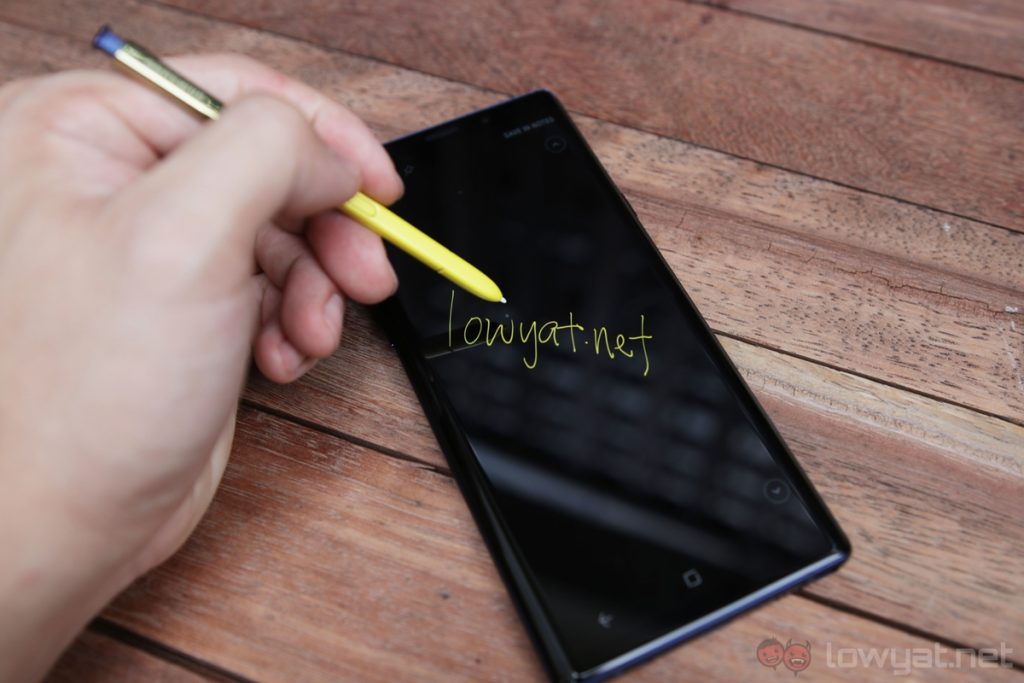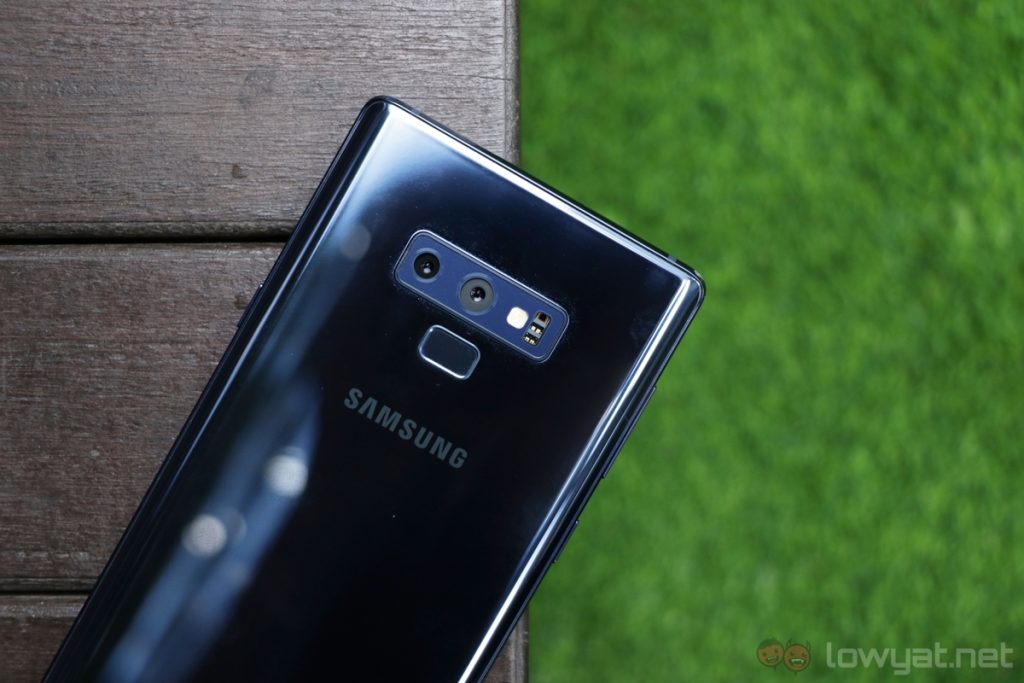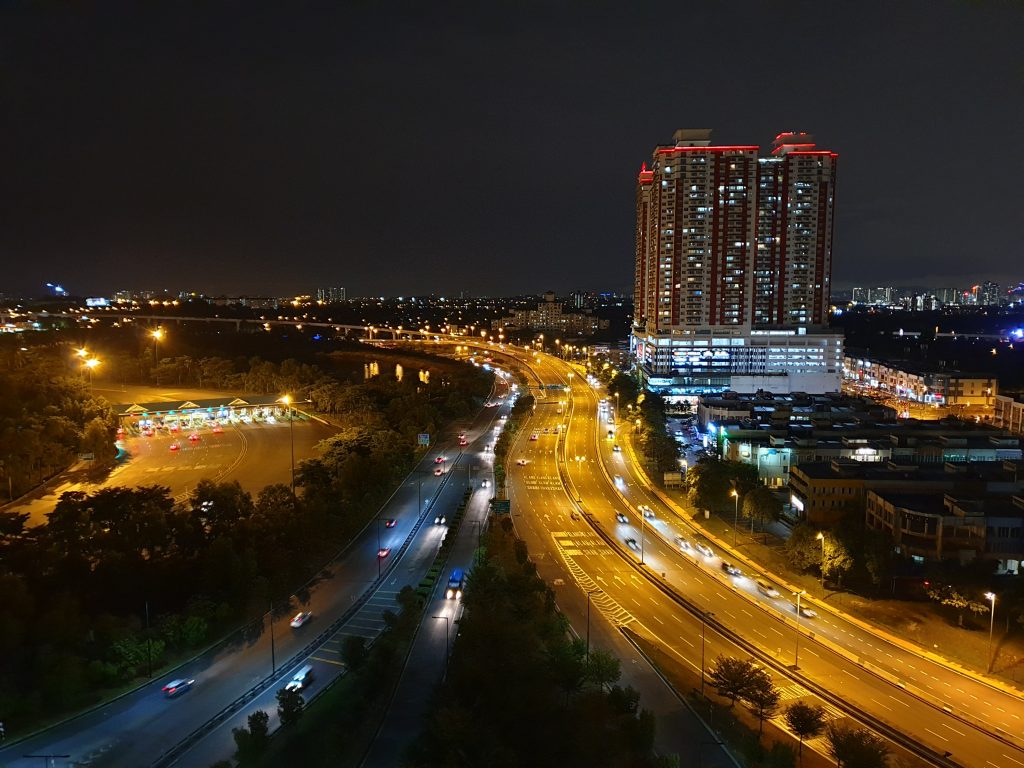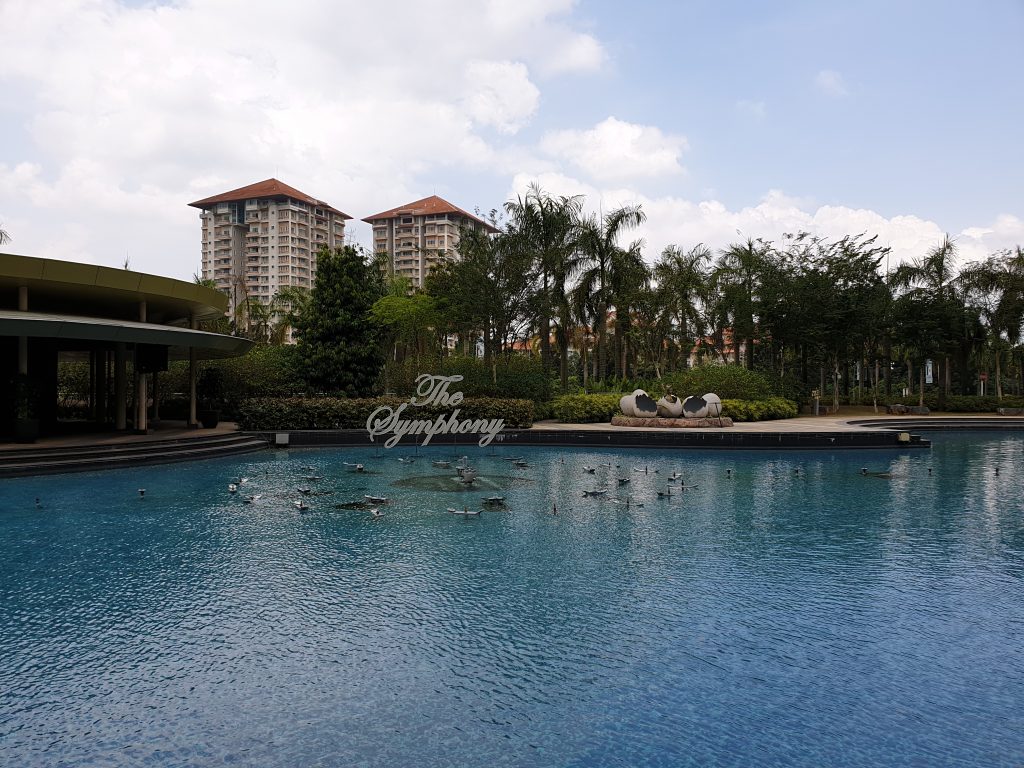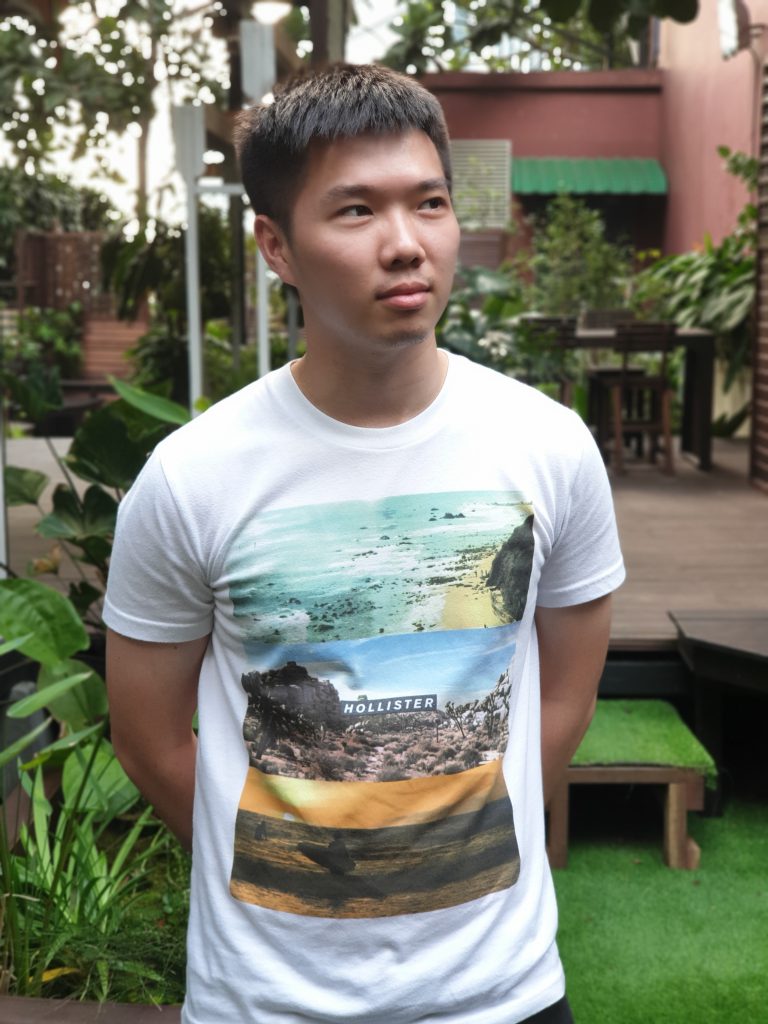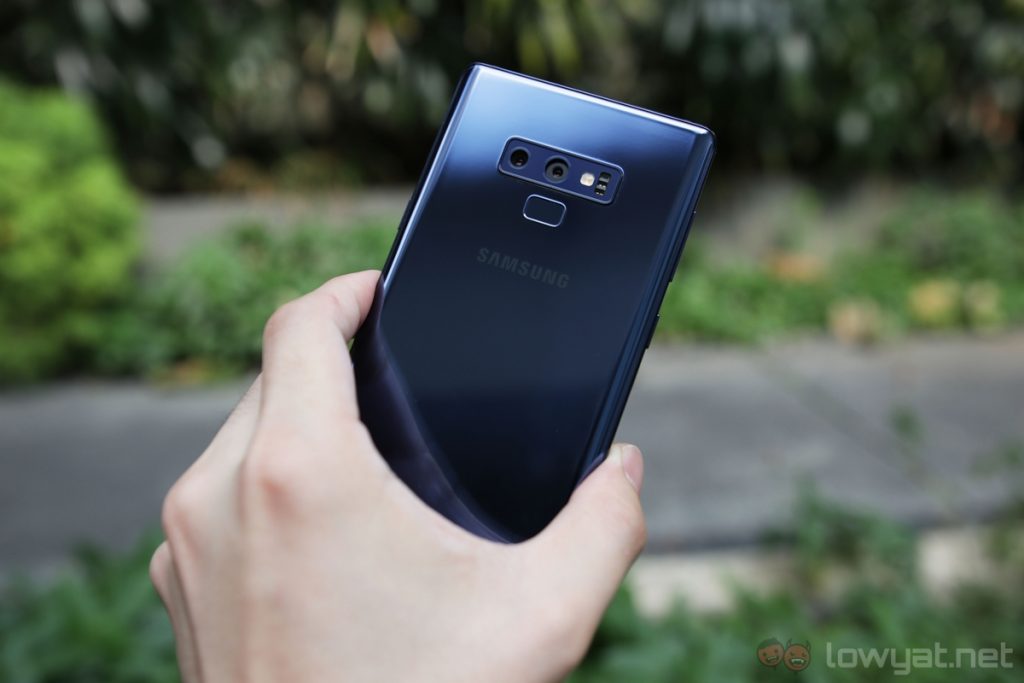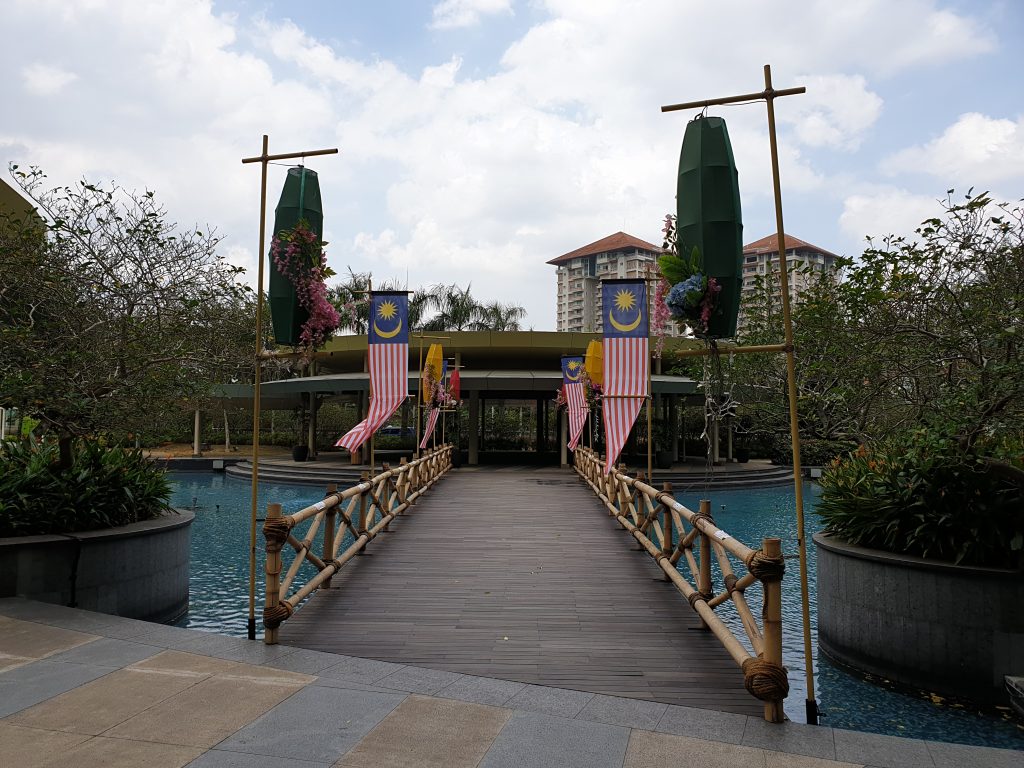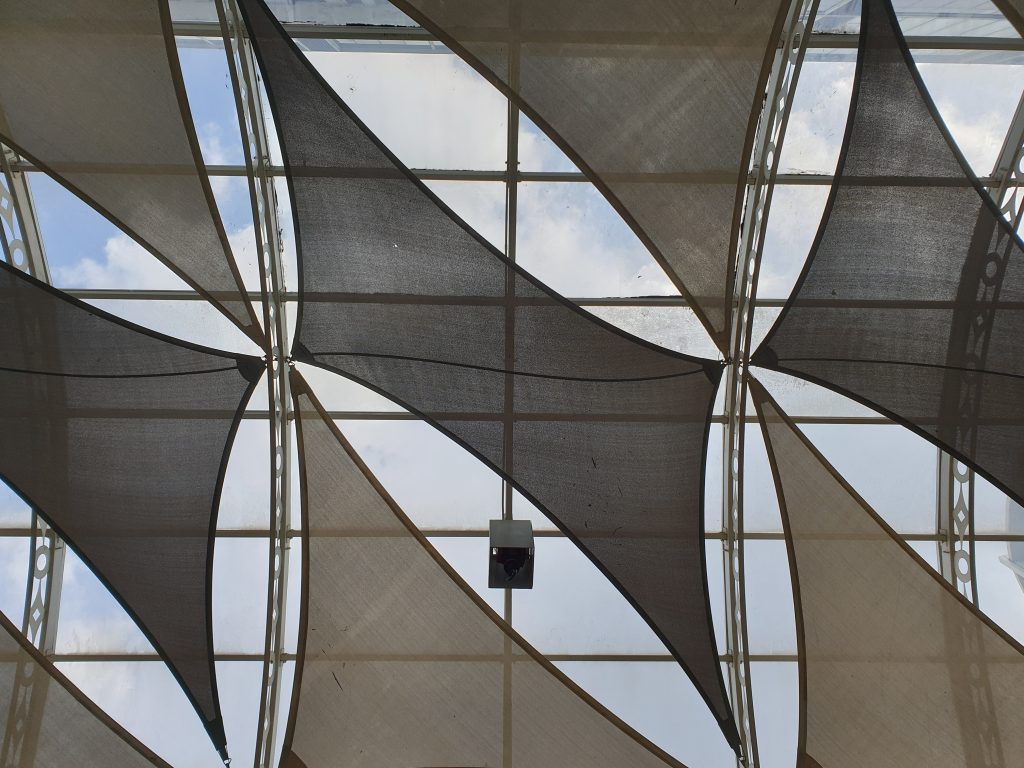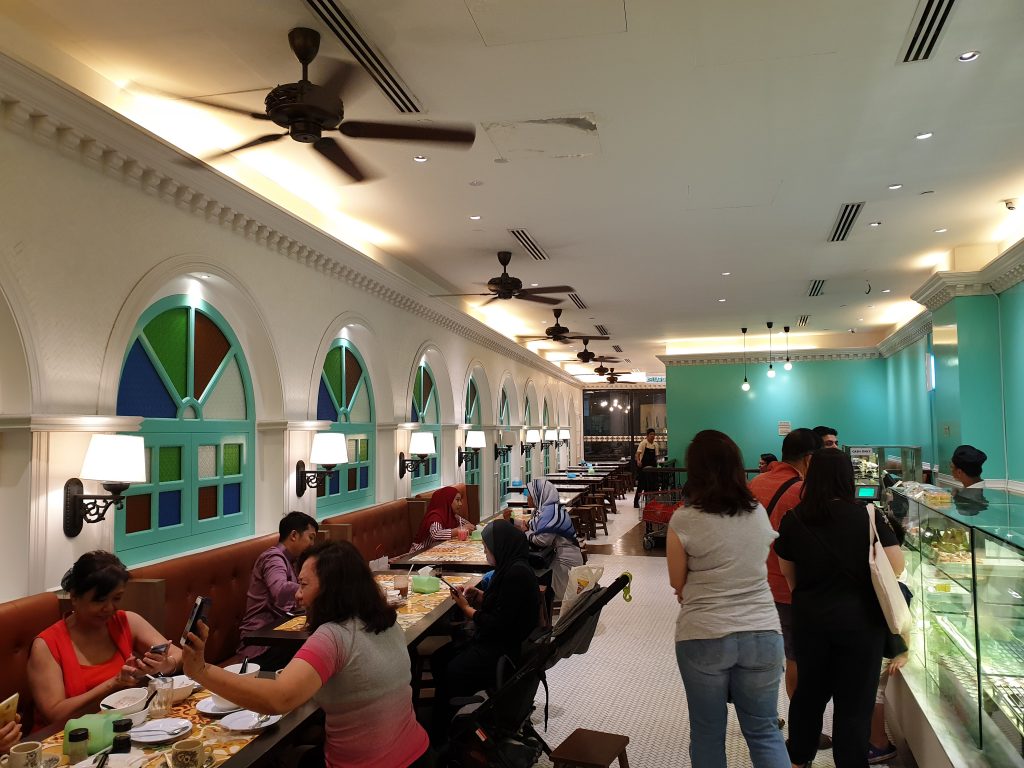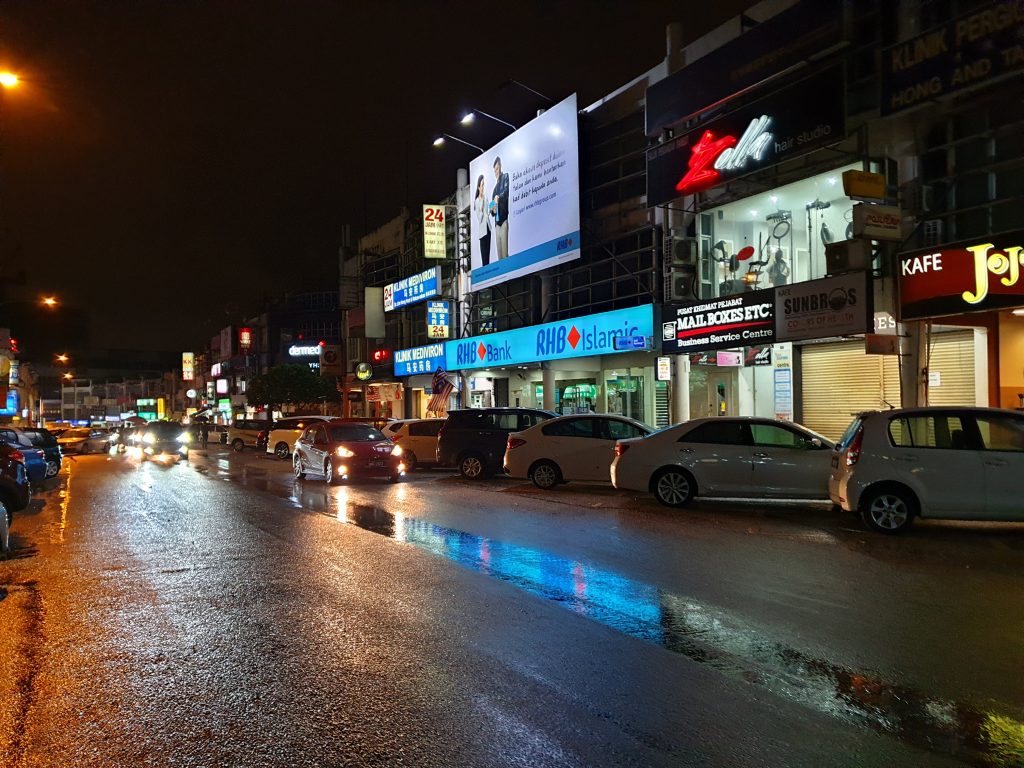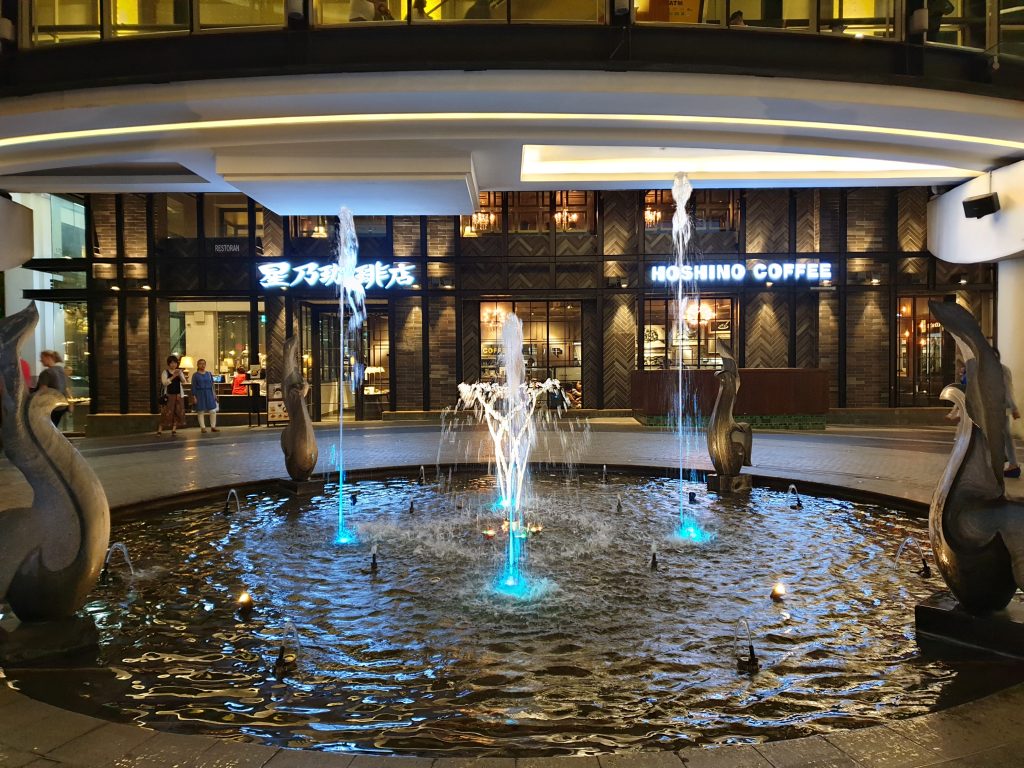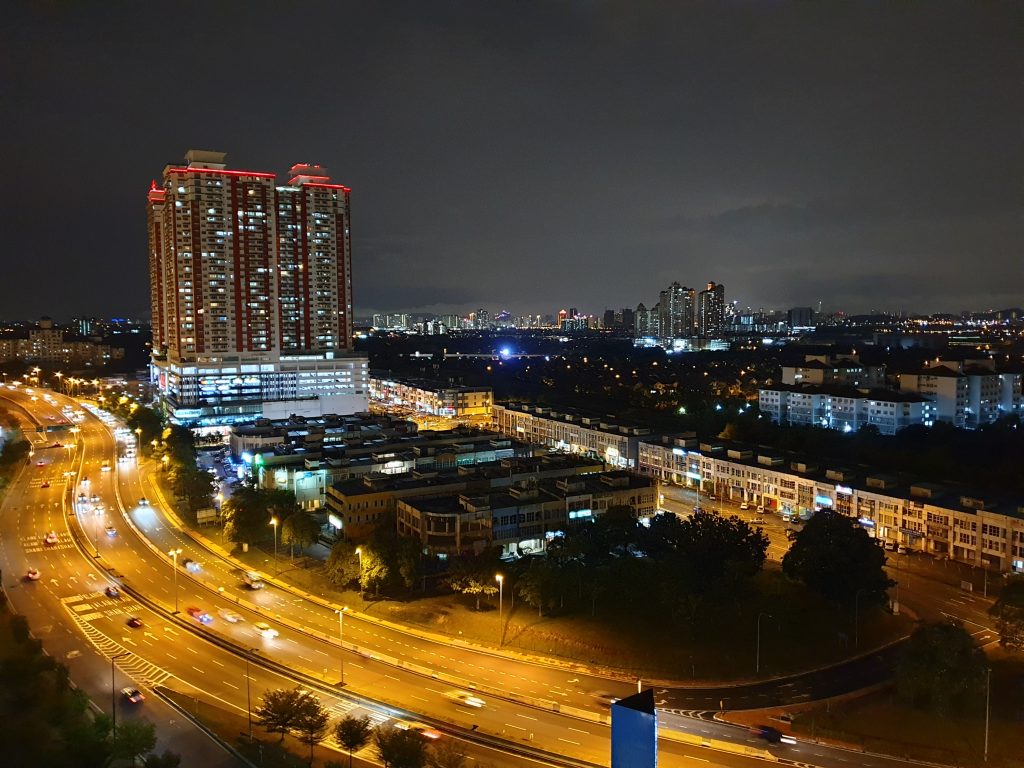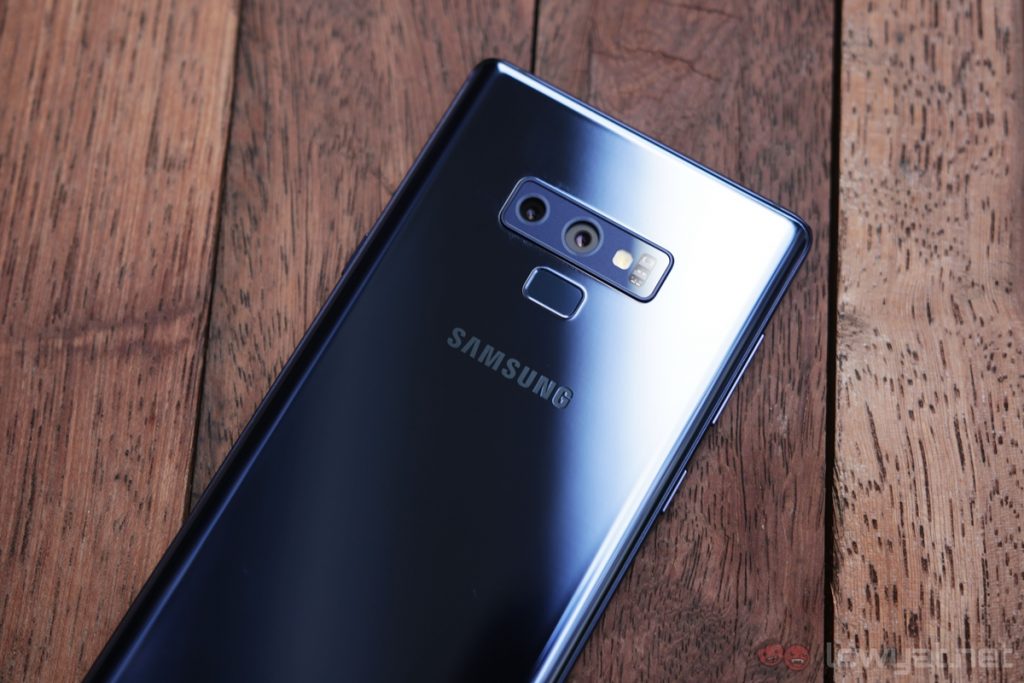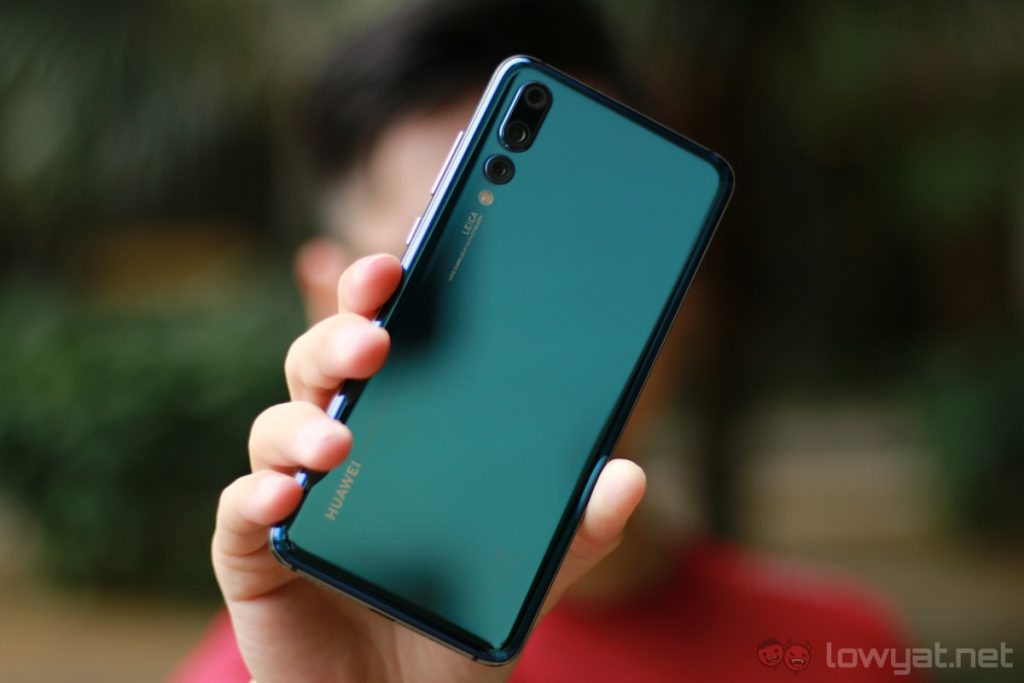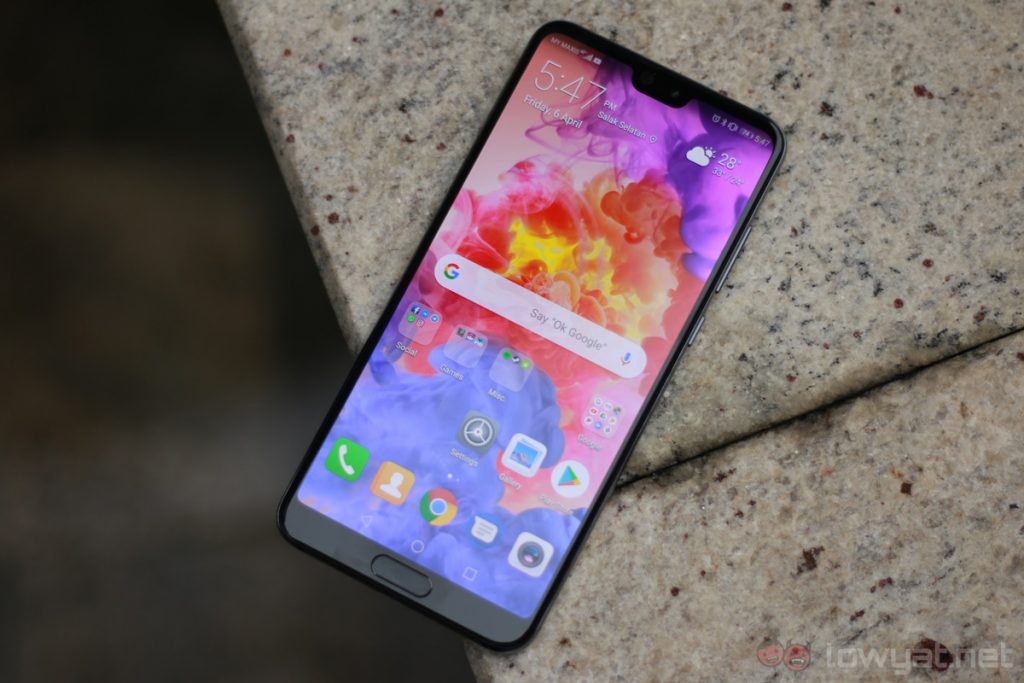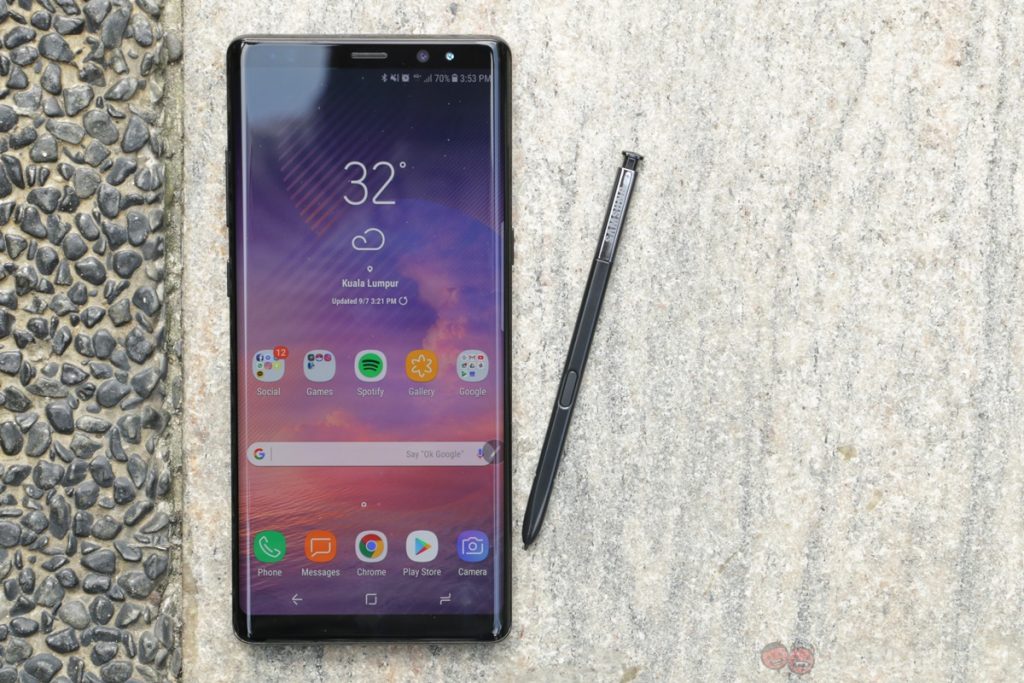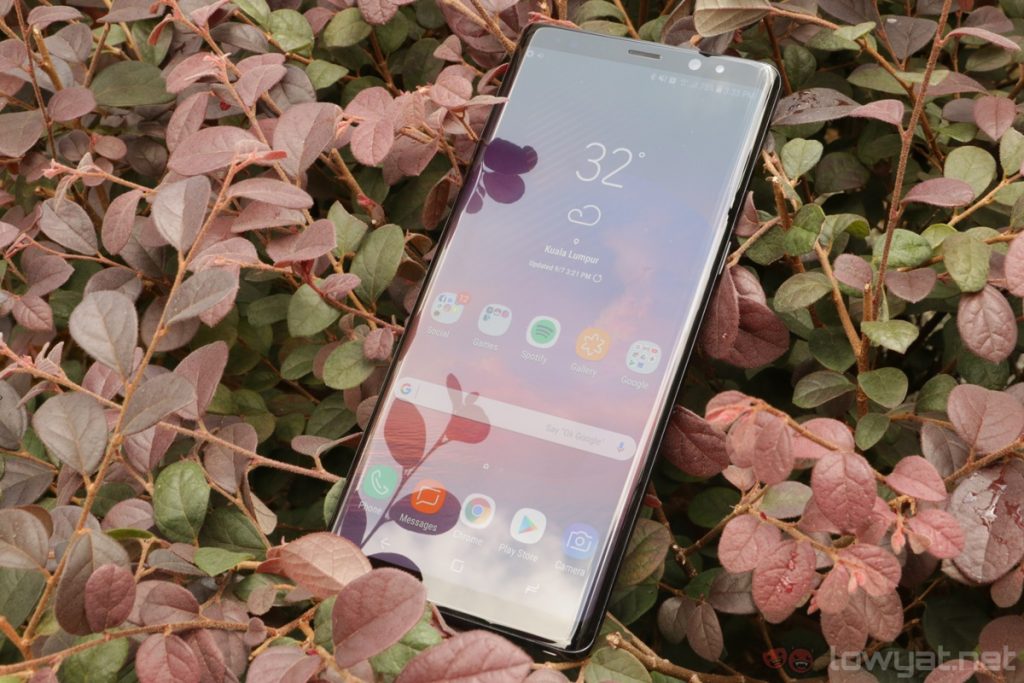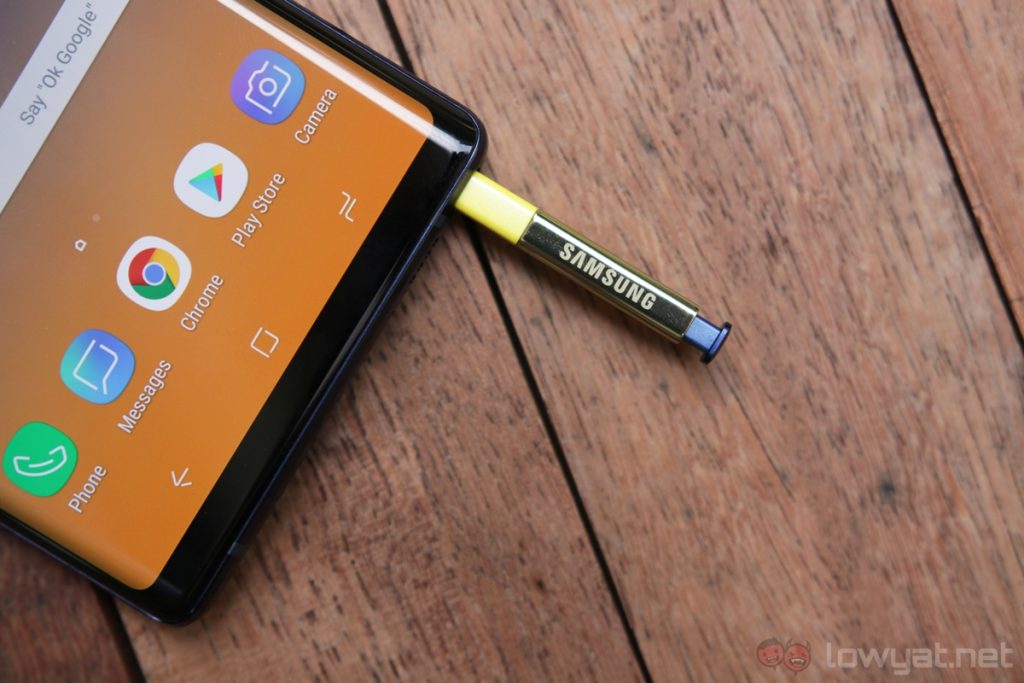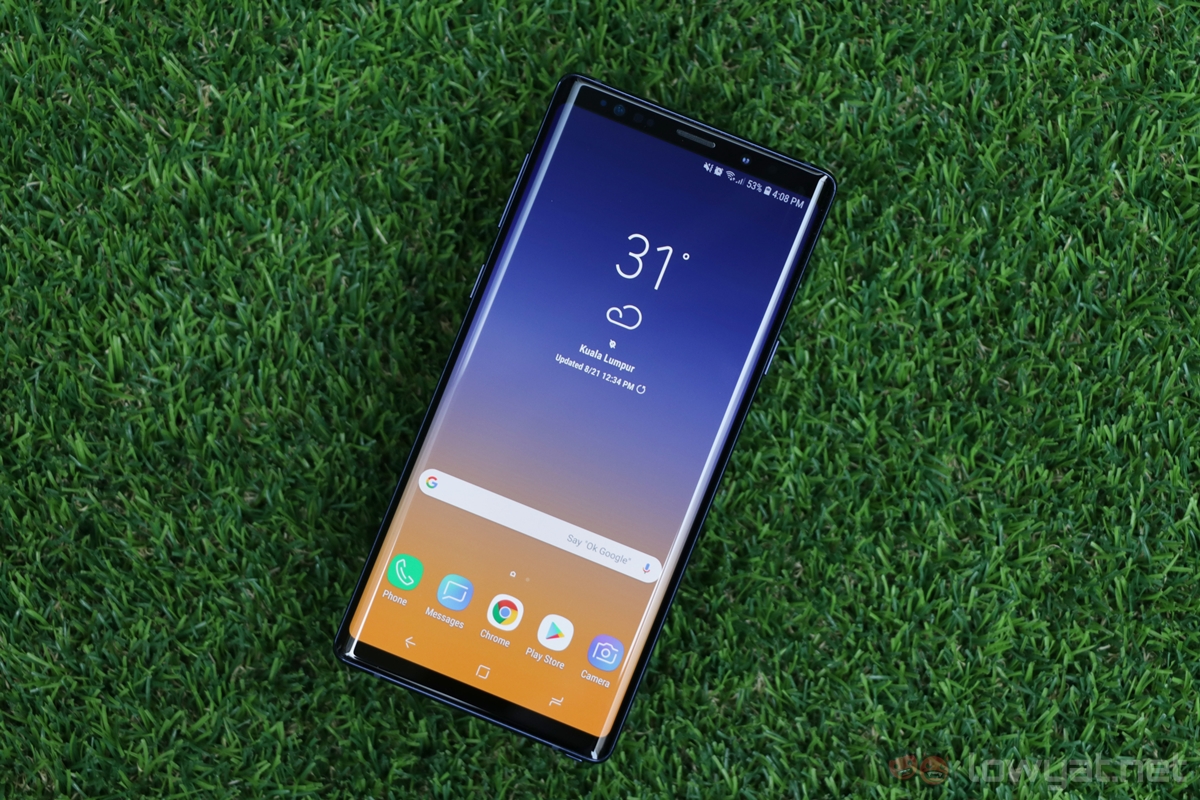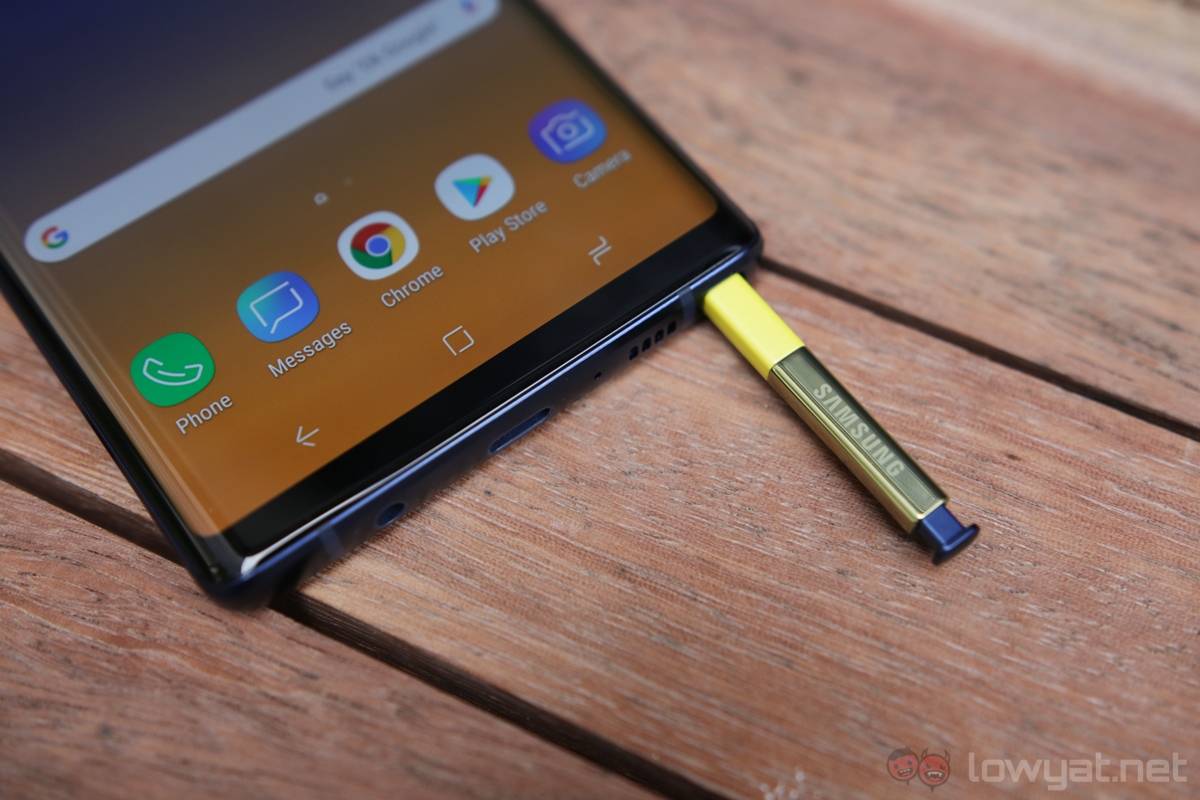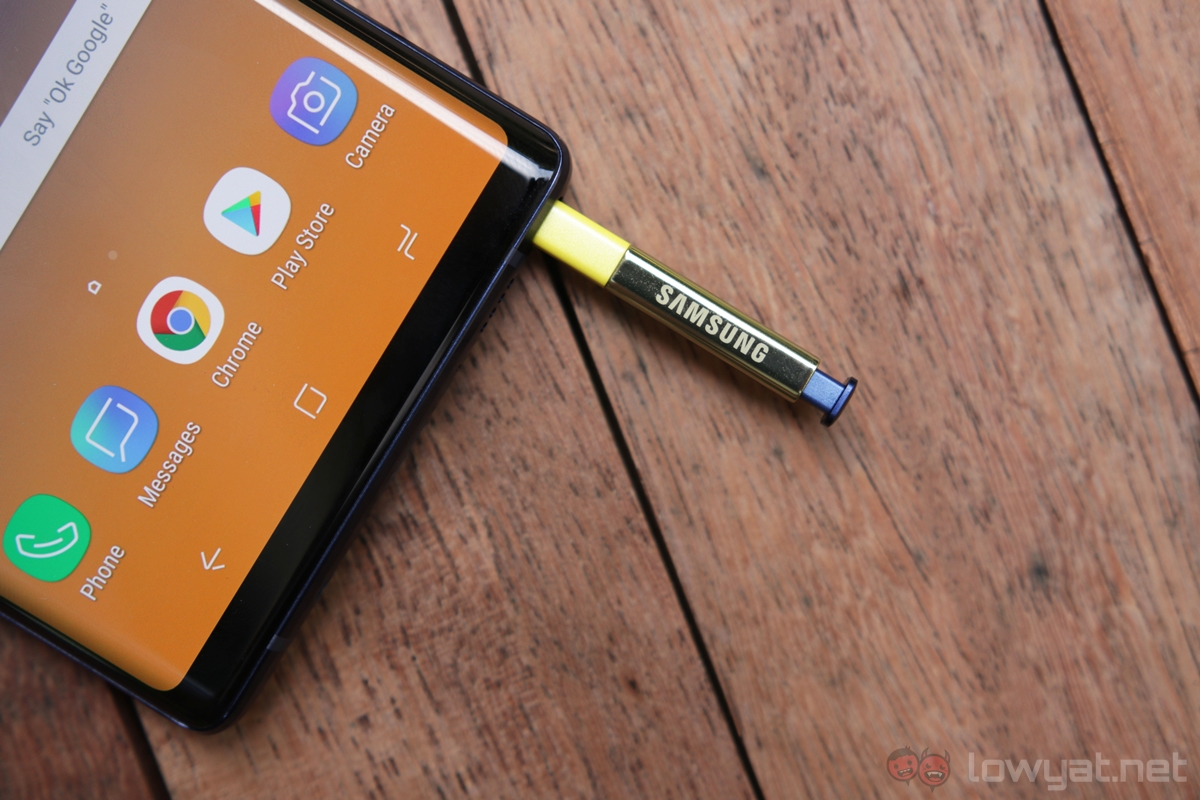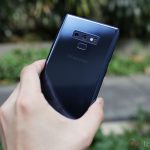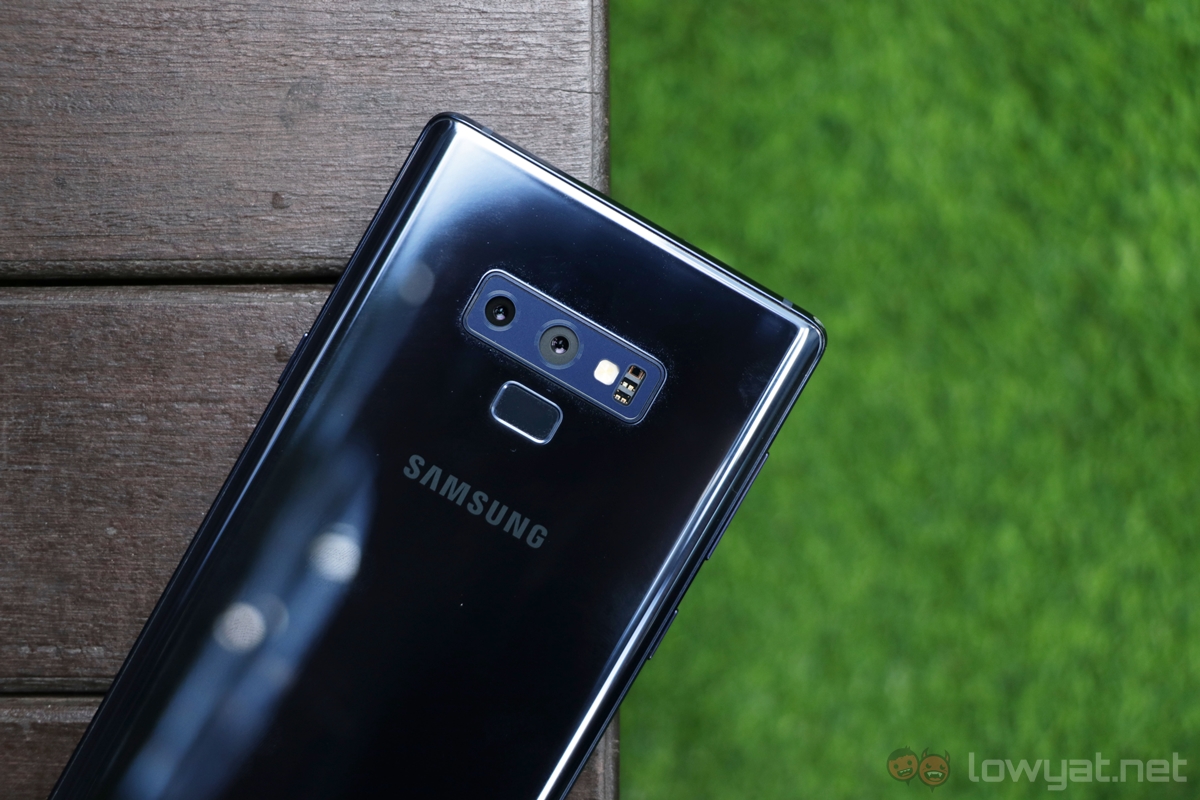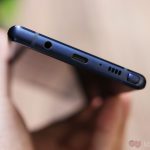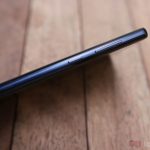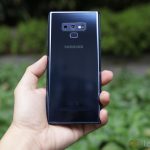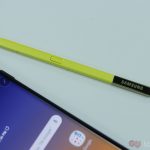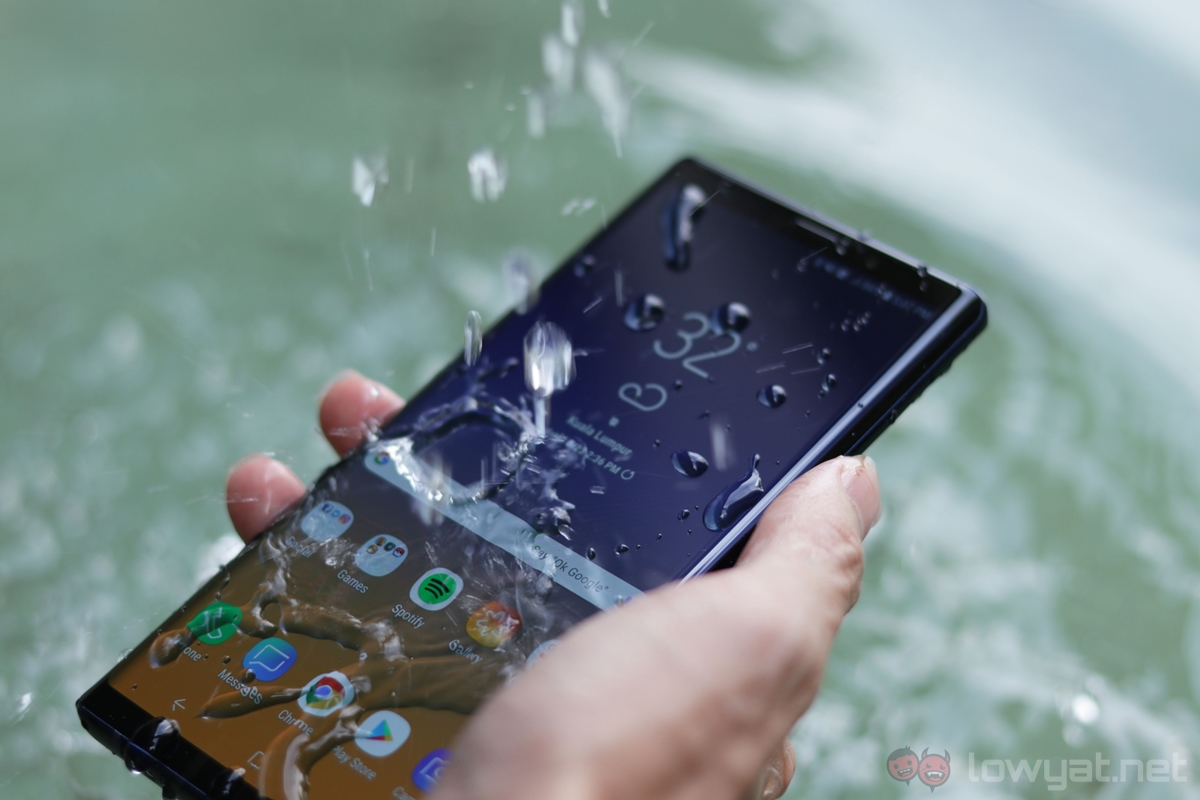“Playing it safe” is perhaps the most apt description of the new Samsung Galaxy Note 9. It looks almost identical to its predecessor, it doesn’t have that many new features, and in a lot of ways, it’s…basically the Galaxy S9+ with the addition of a Bluetooth-enabled S Pen.
But make no mistake: the Galaxy Note 9 is the best phone ever released by Samsung. It’s not an exciting smartphone, that’s for sure, but it is also the most practical Note device yet, and there are plenty of things to love about the phone.
Specifications
Many of the Galaxy Note 9’s hardware are similar to the Galaxy S9+. These include an Exynos 9810 chipset, a larger 6.4-inch 2960 x 1440 Super AMOLED Infinity Display, an IP68 rating, and a 12MP + 12MP dual-camera system with dual aperture and OIS. There’s also an 8MP front-facing shooter with autofocus – it’s not often you see a selfie camera with an autofocus system.
Aside from that, there are a couple of standout hardware here, including the very generous 4,000mAh battery and whopping 512GB internal storage. To top it off, it’s further expandable to 1TB with a 512GB microSD card. Needless to say, you won’t have any storage issue with the Note 9 – even if you get the 128GB base model.
Design
On the front, it’s almost impossible to tell the Galaxy Note 9 apart from its predecessor. But on the back, it’s much more obvious: the fingerprint sensor is now placed on the bottom of the dual-camera system. I’m not a huge fan of the rectangular camera module’s design and the different lens sizes, but hey, at least the fingerprint sensor is more ergonomically-friendly now.
The fingerprint sensor’s placement finally makes sense.
Samsung also introduced a rather interesting colour combo with the Note 9. If you opt to get the Ocean Blue model, you’ll get a bright and vibrant Yellow S Pen. Personally, I love the colour combination, but if you’re not a fan, there’s also the Midnight Black and Metallic Copper models – each of them gets a colour-matched S Pen instead.
Despite packing a larger 6.4-inch display, the Note 9 doesn’t feel that much bigger than its already sizeable predecessor – the Note 8 had a slightly smaller 6.3-inch screen. On top of that, it’s not all that heavier too, even though it now comes with a much more generous 4,000mAh cell. However, tipping the scales at 201g, it’s definitely heftier than your usual smartphone. Personally, I like the extra weight, but I imagine there will be folks who don’t share my sentiment.
A large and heavy smartphone.
Build quality, on the other hand, is another strong point for the Galaxy Note 9. It feels solid and premium, and it’s comfortable enough to be held for long periods of time. And yes, Samsung is retaining the 3.5mm headphone jack on the Note 9 – an increasing rare port in today’s flagship smartphones.
Unlike the radical shift in design from the ill-fated Galaxy Note 7 to the Note 8, the Note 9 doesn’t see much of a design change. While some may be disappointed at this, the changes Samsung did implement – the fingerprint sensor’s placement, for one – are very welcome. It’s also worth noting that the Note 8 was a very well-designed phone to start with; Samsung is sticking with a great foundation here.
User Experience
Samsung Experience 9.5 on the Galaxy Note 9 is as pleasant as I remember it to be. It is fast, responsive, and it feels pretty lightweight too. Samsung has come a long way since the “dark days” of TouchWiz, and Samsung Experience shows just that. I also love the fact that I can choose which Samsung apps I want to install during the phone’s setup.
Beyond Samsung Experience itself, there is also one new addition to the Note 9’s software. That’s right, I’m talking about the revamped Bixby, which is…still not very good. Despite the new interface and integration with more third-party services, Bixby still isn’t as useful as Google Assistant. It’s not as quick, smart, or capable – Google Assistant is simply the better digital assistant.
Bixby still isn’t up to par.
The only really useful feature of Bixby is Quick Commands, which I’ve already covered in my review of the Note 8. Beyond that, the only time I really “used” Bixby was when I accidentally hit the Bixby-dedicated button.
But enough about software – let’s talk about the Note 9’s signature hardware: the new S Pen. On the surface, this is the same S Pen fans of the Note series know and love, but it now supports Bluetooth. Thanks to this addition, you can now use the S Pen…as a remote.
Basically, you can use the S Pen’s button to control a slew of actions. You can use it as a remote shutter in the camera app, you can control your songs and videos in Spotify and YouTube, and you can even use it to move on to the next slide (or back) in a presentation.
Still the S Pen fans know and love, with some extra features.
And…that’s basically it. It’s not a huge overhaul of the S Pen, though I imagine there will be folks that will still get some use out of this – especially as a remote shutter for the camera.

Aside from the S Pen, we also have the Note 9’s gorgeous 6.4-inch Super AMOLED Infinity Display. Without a doubt Samsung makes excellent displays, and the Note 9’s screen is one of the company’s best works. It has great viewing angles, colours are punchy, blacks are deep, and generally, it looks absolutely stunning. It’s definitely a fitting display for a high-end, premium smartphone.
Stunning display, fast performance.
Performance is also great on the Note 9, as expected. It’s quite an experience to game on such a gorgeous display and high performance phone, and I thoroughly enjoyed playing Fortnite, PUBG Mobile, and a slew of other graphically-demanding mobile games on the Note 9. Never did the phone show any sign of lag or stuttering in gaming or day-to-day-usage.
And then we have perhaps the best reason to get the Galaxy Note 9 over any other current Samsung phone: battery life. Packed with a 4,000mAh cell, this is the largest battery the company has ever put into a Note device, and it translates to very, very good battery life.
On average, I was getting between five to six hours of screen on time with the Note 9. For context, I’m a pretty heavy smartphone user. I do a ton of web browsing, messaging, and of course, play a couple rounds of Fortnite and PUBG Mobile here and there. I imagine less heavy smartphone users will get even longer battery life.
Great battery life, but charging rate could still use some work.
The only thing that’s left for Samsung to do now is to improve the charging rate. Using the provided charger in the box, the Note 9 only charged up to 37% within 30 minutes of charging – not very quick.
Using the Galaxy Note 9 as my daily driver for the last couple of weeks was definitely an enjoyable experience. I love the gorgeous display, long battery life, and fast performance. Oh, the Note 9’s AKG-tuned stereo speakers are worth a mention too – it’s by far one of the best speaker systems I’ve heard on a smartphone.
Camera
Sporting the same 12MP wide-angle + 12MP telephoto dual-camera system with dual aperture found in the Galaxy S9+, you can expect very similar camera performance on the Galaxy Note 9. It can return great shots regardless of lighting situation, it has extremely fast autofocus, and thanks to the very responsive camera app, it’s effortless to photograph with the Note 9.
Building upon a great camera platform.
Even though the Note 9 has the same camera system as the S9+, it does have a couple of new tricks. For one, there’s the Scene Optimiser feature, which automatically recognise and enhance up to 20 different scenes. In my experience, the feature isn’t quite as quick as, say, Huawei’s Master AI, but it works as intended. The degree of enhancement is also a lot more subtle than Huawei’s implementation.
Besides that, the Note 9’s camera is now smart enough to identify if the shot you just took was imperfect. Dubbed Flaw Detection, it can detect “blinks, blurs, smudged lenses, and excessive backlighting.” While this doesn’t sound particularly impressive, it does work very well, and it notified me on more than one occasion when my shot was blurry.
How about Live Focus? Well, it still works great. Compared to other smartphones’ Portrait Mode, Samsung’s implementation is really one of the better ones. The separation between the subject and background is great (I can still adjust the background blur too), and I love the Dual Capture feature – it offers me the flexibility of having images taken with both the wide-angle and telephoto sensors.
Samsung’s flagship phones have some of the best camera performances in the market, and it’s no different with the Galaxy Note 9. That being said, I still find the Huawei P20 Pro’s Leica triple-camera system to be superior, especially when it comes to low light performance.
Sample Images
Competition
The most affordable Galaxy Note 9 retails at RM3,699 for the 128GB model with 6GB of RAM, and the price goes up to a whopping RM4,599 for the 512GB variant with 8GB of RAM. While these prices are definitely on the high side, it’s worth noting that the Galaxy Note 8 – with only 64GB of storage – retailed at RM3,999 last year.
Nonetheless, here are some noteworthy alternatives to the Note 9.
Huawei P20 Pro
As Huawei’s best smartphone to date, the P20 Pro is a great alternative to the Note 9, and it has a couple of distinct advantages. Not only does it have superior camera performance, the Twilight P20 Pro with its gradient glass back sports a sleeker, more unique appearance than the Note 9. On top of that, it also has similar battery life and more affordable price tag – you can get it for almost RM1,000 less than the cheapest Note 9 now.
However, the P20 Pro does not offer any alternative to the Galaxy Note 9’s S Pen, and the former also lacks support for expandable storage and a 3.5mm headphone jack. Although the Note 9 costs considerably more than the P20 Pro, you’re getting a more impressive – and notch-less – display too, not to mention better software experience and performance.
Samsung Galaxy Note 8
If you really want the S Pen but don’t want to spend a small fortune on the Note 9, you have the Galaxy Note 8. Now retailing at only RM2,499, the Note 8 is considerably more affordable. For less money, it still offers an S Pen – albeit without Bluetooth support – similar design, and impressive display.
On the flip side, the Note 8 is still last year’s flagship, so it won’t have the same level of performance as the Note 9. Besides that, the Note 9 also has much better battery life, a more capable camera system, and Bluetooth-enabled S Pen. But is it worth the huge price difference? That’s up to each individual, of course.
Conclusion
The Samsung Galaxy Note 9 is without a doubt Samsung’s most refined, most impressive smartphone to date. The Korean company may be playing it safe by only introducing incremental upgrades, but that’s not necessarily a bad thing – the Note 9 is still a great flagship phone with long battery life, fast performance, huge storage, and intelligent camera.
The best Samsung phone to date – with a price to match.
In order to get the best phone Samsung has ever produced, you’ll also have to fork out a lot of money – RM3,699 for the most affordable Note 9 is a hefty price tag. But if you live by the S Pen and are willing to splurge, the Galaxy Note 9 will probably be the best phone you’ll ever buy – until the next Note device is here.
Photography by Ming Hoo.
Follow us on Instagram, Facebook, Twitter or Telegram for more updates and breaking news.


